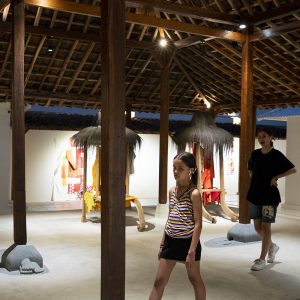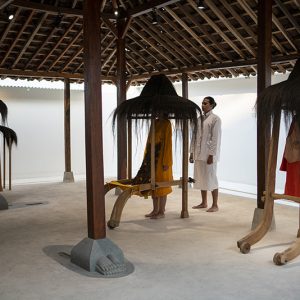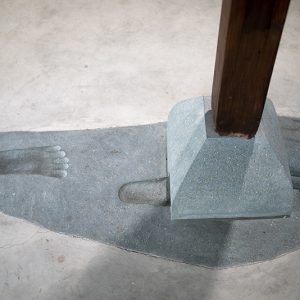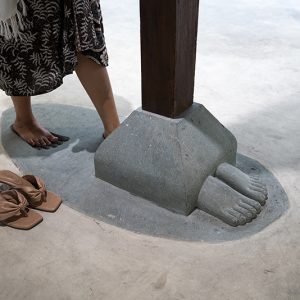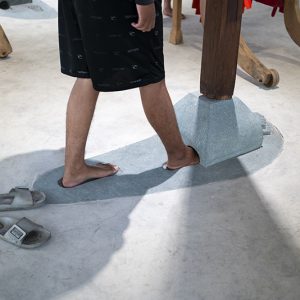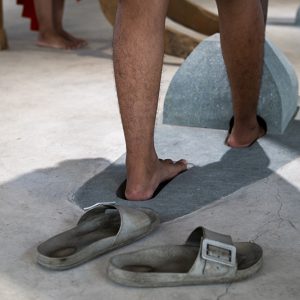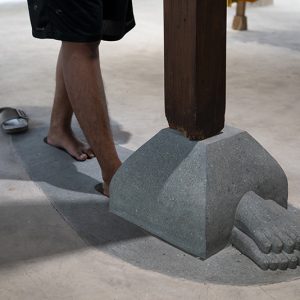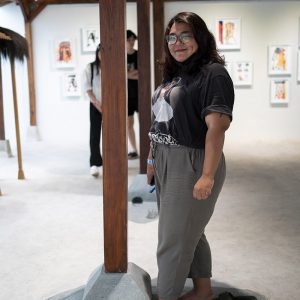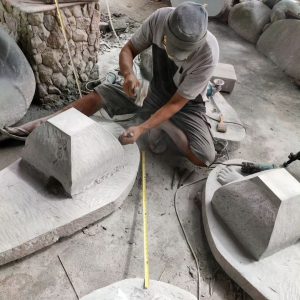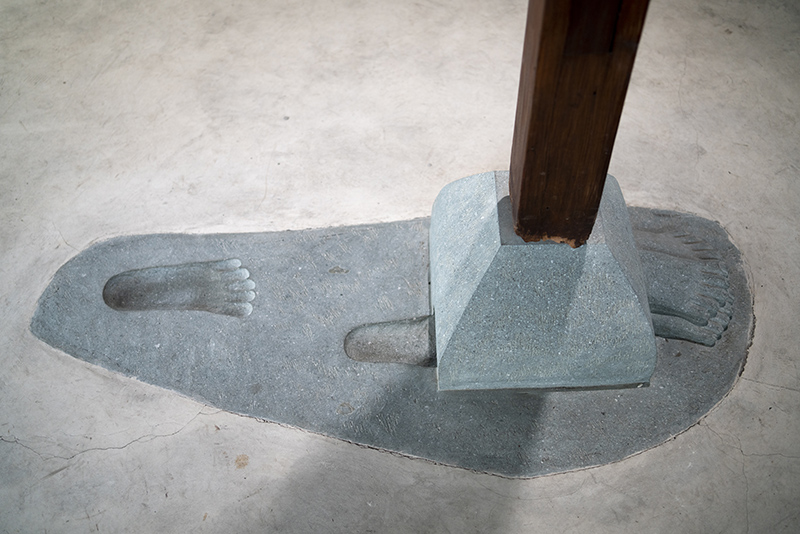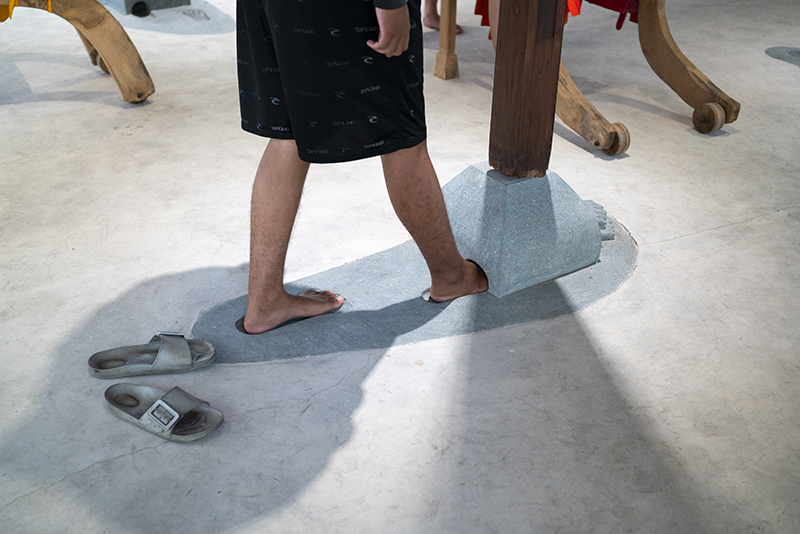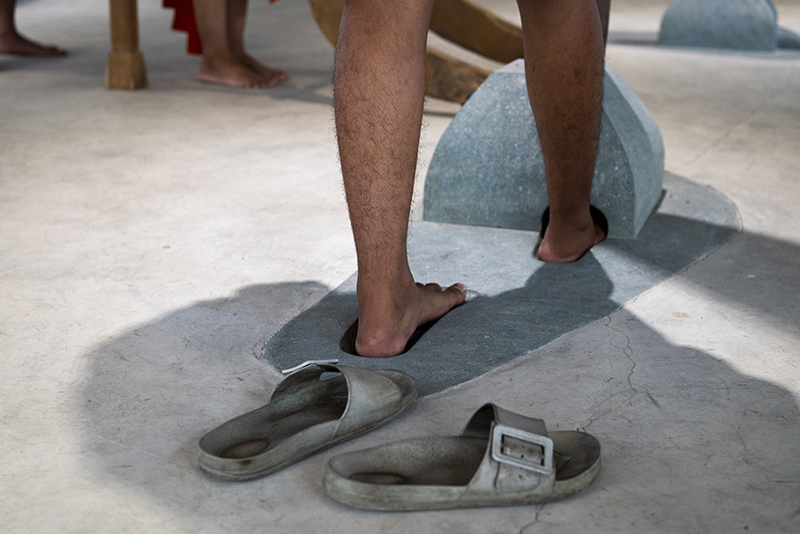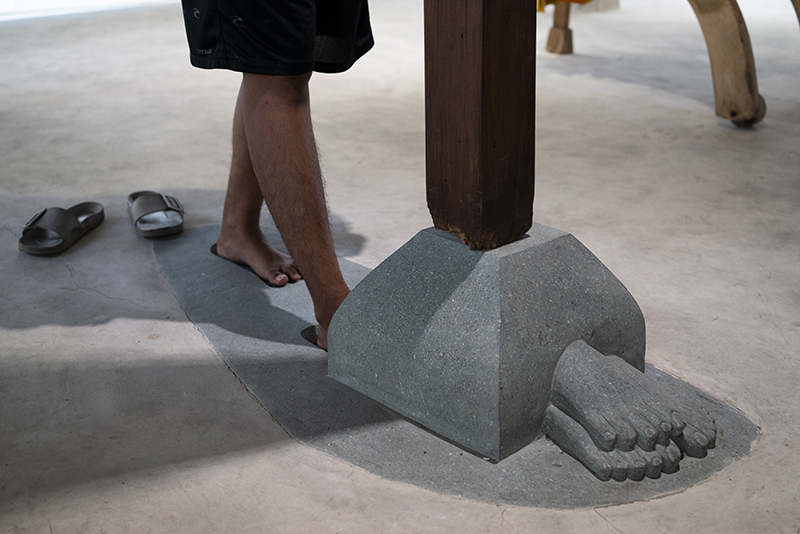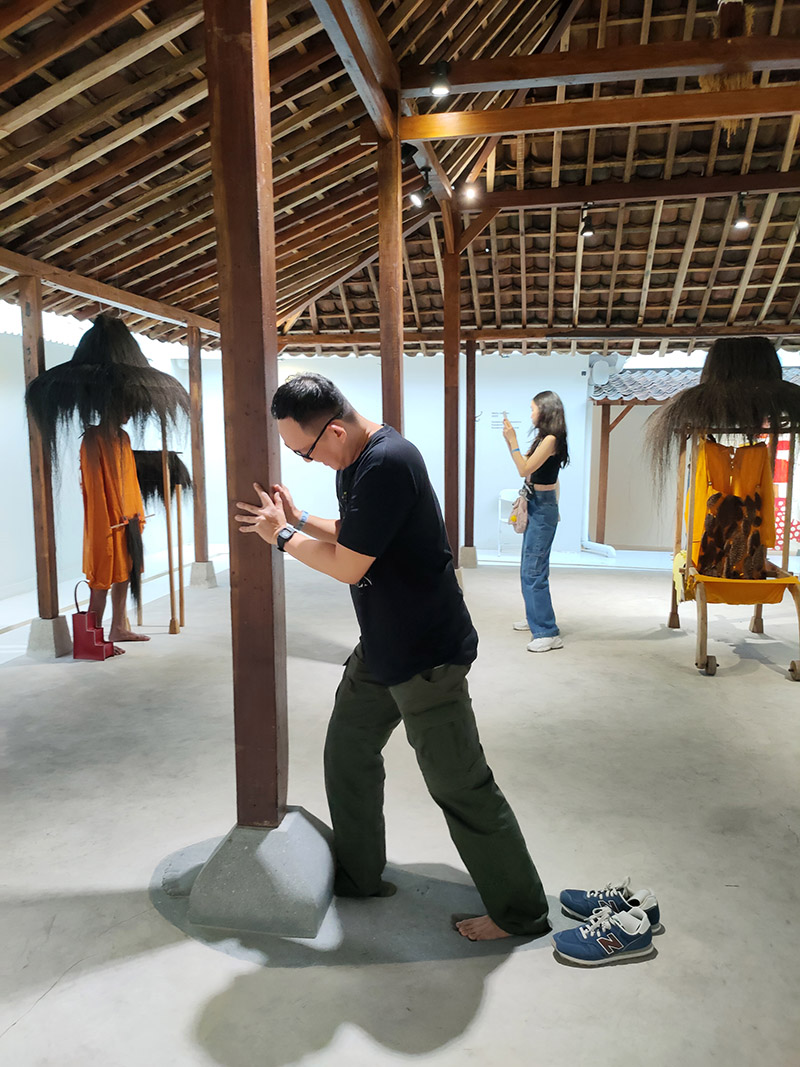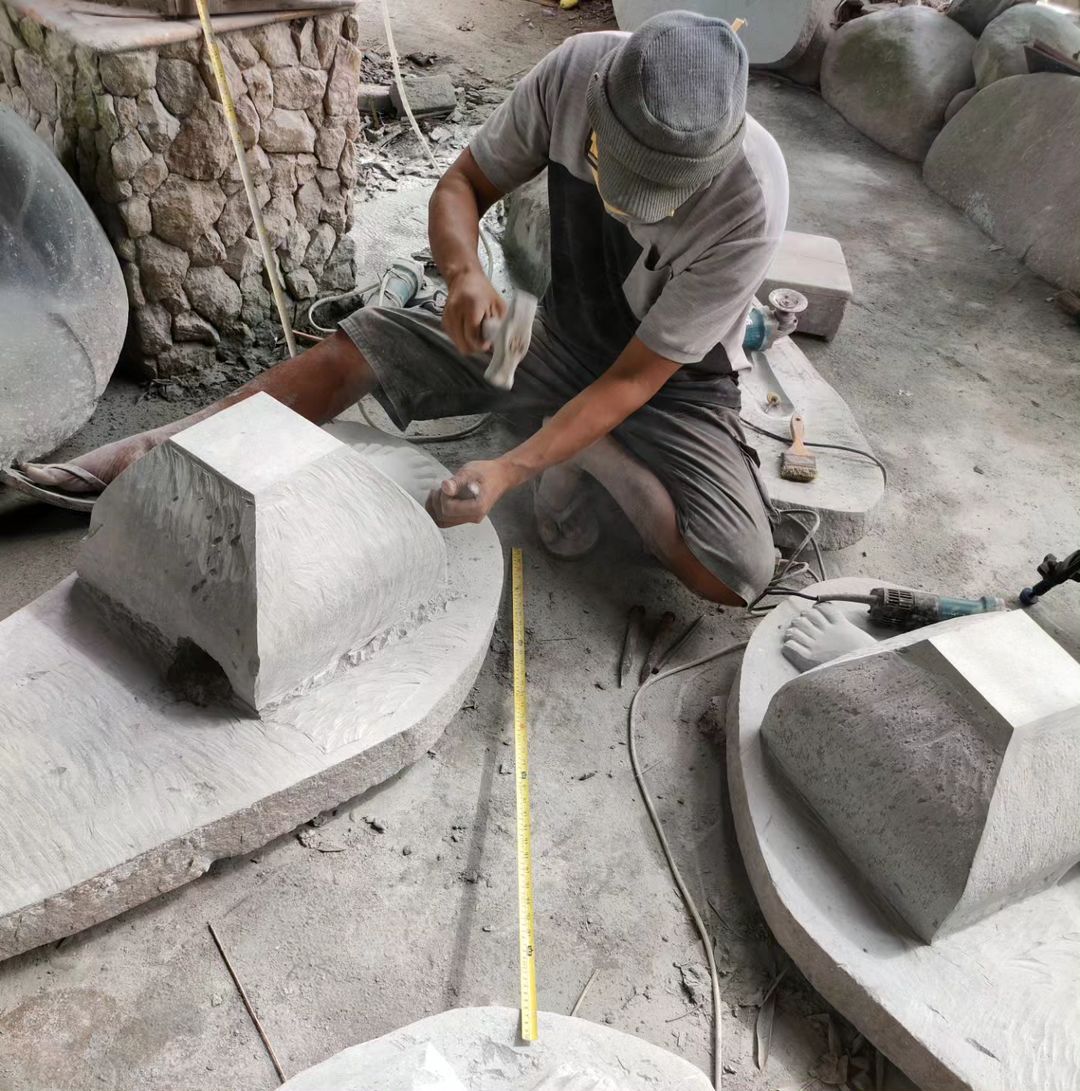Text by Nadiah Bamadhaj, (co-curator ArtJog 2023 together with Hendro Wiyanto)
In Javanese philosophy, a limasan house is built according to the dimensions of the human body. A similar view can also be found in the spatial concept called Asta Kosala Kosali in the Hindu-Buddhist culture in Bali that Mella studied. In this view, the creation of spatial must be based on a cosmological balance that represents the harmony of interconnectedness between humans, nature, and God. In this perspective, Mella’s interest is related to the human body motif that has been prominent in her works since the early 2000s.
The structure of the limasan consists of umpak (pedestal or base), pillars, and a high roof. Umpak refers to the feet or the underworld, while the pillar represents the body and the high roof points to where the gods reside. The architectural construction of limasan is designed to create harmony between the body and the space one occupies. Thus, Traditional architecture means not only an inhabited space but also a “body” that needs to be lived.
Within the space or body of this limasan, Mella composes readings between the “outskirts”, which are the rural areas where limasan are commonly found, and the center as agents of gentrification or social changes carried out by the urban middle class. Limasan becomes the object of negotiation between those on the margins, the poor rural community and the rich in the city. Like Mella and her husband Nindityo from Cemeti Art House, the middle class obtained limasan from people in the village and turned it into an artistic residence in the middle of the city.
Mella also approaches limasan as an object with flexible pragmatic and ecological functions. This building can be assembled, disassembled, and changed according to its designation or moved during a crisis. Limasan is also designed to withstand the heat, earthquake, and tropical climate challenges in the ring of fire region.
Outskirts-Underworld (2023)
Mella’s first work on this limasan structure is Outskirts-Underworld. This work consists of a pair of human footprints embedded in the umpak (the base). Here, the foot inserted into the base of the building resembles a body wearing clothes.
Feet is not just a metaphor for a movement or a pause. It represents the (under)world—tension and darkness in the house, concealed sexuality in the family, and the binding relationship of the body to a certain space from birth to death. At the same time, feet can move and change their location, taking us away and bringing us back together elsewhere. It is a moving object in negotiations between the outskirts and the center.
Like most of Mella’s works, Outskirts-Underworld represents the construction of a limasan “worn” by the performer’s body. Limasan is a skin that embodies a theme reflecting most of Mella’s work from the late 1990s and 2000s.
